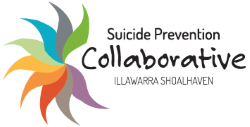More than 3000 people die by suicide in Australia each year, but it is preventable - and just starting a conversation can have a powerful impact.
Story by Natalie Croxon, Illawarra Mercury.
September 10 marks World Suicide Prevention Day, a time to honour the memory of those who have died, acknowledge those who have experienced a suicidal crisis, and support others affected.
Clare Leslie, program manager with the Illawarra Shoalhaven Suicide Prevention Collaborative, said that while suicide was a very individual and complex issue, it was also very preventable.
She said opening up a conversation about suicide could be scary, but it showed others that they were noticed and cared for.
Both Ms Leslie and Lifeline South Coast chief executive officer Renee Green encouraged people to have conversations and be open about the issue.
"It could be something along the lines of, 'I've noticed you don't seem yourself lately and I'm worried about you. Are you thinking about suicide?'" Ms Leslie said of starting a conversation.
She said that if the answer was yes, there was no need to solve that person's problems.
"Just having someone there and listening is an incredibly powerful thing," she said.
They can also refer the person to other services, such as Lifeline (13 14 11), 13YARN (the crisis support line for Indigenous Australians, 13 92 76) or their GP.
Letting another loved one know that the person was not doing OK was also an option, Ms Leslie said.
She stressed that someone did not have to be a professional to have these conversations, but anyone interested in learning more could take a look at courses offered by Lifeline South Coast.
Ms Green said the number of people seeking help from Lifeline South Coast remained "really high", the same levels as during the COVID pandemic.
What was positive was that people were seeking help, she said, as she encouraged people to reach out early if they needed support.
But Ms Green said there was still a stigma associated with suicide.
"I think we still have work to do to encourage all people across our community to understand that even the most resilient people... still need a little bit of extra help," she said.
This speaks to the theme the International Association for Suicide Prevention has set for World Suicide Prevention Day: 'Changing the narrative on suicide'.
Ms Leslie said this encouraged the community to understand suicide better.
"I think a lot of people still associate suicide with mental illness, and that is not (always) the case," Ms Leslie said.
Almost half of people who die by suicide have not had contact with the health system for mental illness in the previous 12 months.
Ms Leslie said a suicidal crisis could be related to situational distress, such as financial difficulties, a relationship breakdown, or the loss of a job.
Anyone who wants to pay tribute to those who have died by suicide or show their support for those bereaved or experiencing a crisis can take part in Lifeline South Coast's annual Out of the Shadows walk.
The walk takes place at 5.45am on Tuesday, September 10 from the lighthouse on Flagstaff Hill in Wollongong.
More than 100 people have registered to join.
- Support is available. Call Lifeline on 13 11 14 or or 13YARN on 13 92 76, or visit Wollongong Safe Haven (open 2-10pm Wed-Sat, 55 Urunga Parade, Wollongong)
- For those who have lost a loved one by suicide, StandBy Support After Suicide (24/7, phone 1300 727 247) and Thirrili Indigenous Postvention Support (24/7, phone 1800 805 801) offer emotional and practical support
